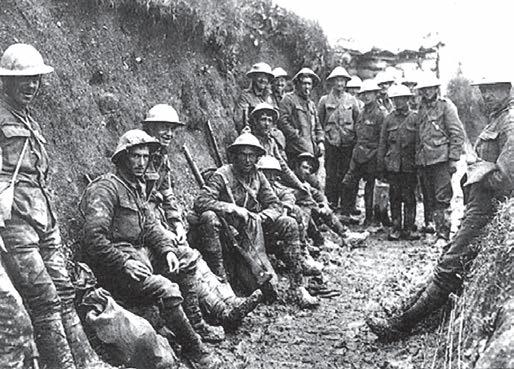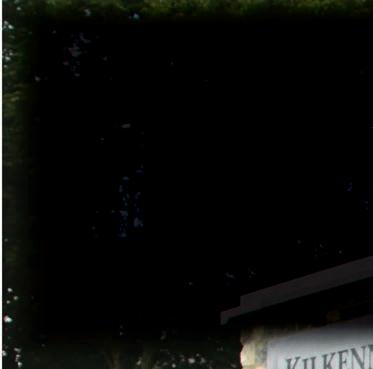
4 minute read
Commemoration at the Peace Park in Kilkenny to remember those who died at the Somme
e news from Ukraine everyday reminds us of the bloody and harrowing tales that go hand in hand with war.
As the years go by, and the world becomes smaller, stories of present day ghting is beamed into our homes on a regular and painful basis.
Advertisement
When the ‘Kilkenny great war memorial committee’ unveiled the fantastic memorial at Kilkenny’s Peace Park in 2018, one of the prayers on the day was for the continuation of world peace.

If nothing else, the current days struggle in Ukraine shows how horrible and devastating such wars are. It places a di erent complexion on the gathering this Sunday when members of the Great war memorial committee join to remember those who died at the battle of e Somme.
And, painful and distressing as the talk of war can be, it is important to remember and in particular to remember our fallen dead.
Perhaps it is nigh on impossible for us to comprehend what those brave men and women who died for their country went
through.
e rst day of the Somme was the deadliest day in British military history – of the 57,470 British casualties, 19,240 men had been killed.
e Battle of the Somme, also known as the Somme O ensive, was fought during the First World War from 1 July to 18 November 1916.

In the summer of 1916 the British launched the largest battle of the war on the Western Front, against German lines. e o ensive was one of the bloodiest in human history.
REMEMBERING THOSE WHO DIED AT THE SOMME is coming Sunday, at the Great War memorial, at e Peace Park, a special commemoration will take place to remember those from Kilkenny who died at the Somme.
e short ceremony will focus in particular on the one hundred and twenty six Kilkenny people who lost their lives during the Somme battle.
e remembrance will consist of poetry, prayer, music and wreath laying. One poem which was read
In wiser days, my darling rosebud, blown To beauty proud as was your Mother’s prime. In that desired, delayed, incredible time, You’ll ask why I abandoned you, my own, And the dear heart that was your baby throne, To die with death. And oh! they’ll give you rhyme And reason: some will call the thing sublime, And some decry it in a knowing tone. So here, while the mad guns curse overhead, And tired men sigh with mud for couch and oor, Know that we fools, now with the foolish dead, Died not for ag, nor King, nor Emperor, But for a dream, born in a herdsmen shed, And for the secret Scripture of the poor. (Tom Kettle) last year by John Joe Cullen sums up much of the pain and grief of war. e Cathaoirleach of Kilkenny county council and Mayor of the city are expected to attend.



It was composed by one of the best known war poets Tom Kettle who was killed in action with 'B' Company of the 9th Battalion of the Royal Dublin Fusiliers in an attack on German lines on 9 September 1916, near the village of Ginchy during the Somme O ensive in France.

During the ceremony, which begins at 12 noon, e Last Post and Reveille will be played and the event will include a minutes silence as well as the raising of the National ag and the playing of the National anthem.
Many Kilkenny men who died in the battle of the Somme are remembered on the iepval Memorial, Authuille, France.

Speaking to e Kilkenny Observer newspaper, Commandant Larry Scallan (retired) from James Stephens barracks, told of the great number of men who died on the Somme.
Larry also informed the paper that seven Kilkenny men died on the rst day July 1st.
One of those men was e ceremony will take place at the memorial in the Peace Park on Sunday July 2nd at 12 noon. e ceremony will consist of prayer, poetry, re ections, wreath laying, minutes Silence, last Post and Reveille, Raising of the National Flag, playing of the National Anthem. e research notes: “AI, robotic process automation (RPA), and similar tools and technologies have been around for some time. However, the availability of large language models (LLM) generative AI tools like ChatGPT and Google Bard, and the embedding of generative AI in various enterprise applications from human resources to customer service to development platforms, is causing companies and their employees to take notice.”

13084 Private Luke Coughlin who served in the Machine Gun Corps, who left a wife called Kate and three children James, Mary and Margaret. Luke's army pension was paid until his youngest child reached 16 years old in 1930.
Seventy two Kilkenny men of the battle of the Somme have no known grave and are commemorated on the iepval Memorial.



Chair of e Great War Memorial Committee Donal Croghan has issued an open invitation for people to join in the 12 noon start on Sunday and that those wishing to lay a wreath would be welcome to do so.
AI has the potential to automate 40% of the average work day, according to research rm Valoir. e widespread use of generative arti cial intelligence – such as ChatGPT – has raised public awareness of its ability to increase productivity and e ciency, as well its risks.
Other research shows that generative AI adoption in marketing reveals promising productivity gains, with marketers estimating generative AI can save them the equivalent of over a month per year, making room for more meaningful work.
To better understand the potential impact of AI and automation on productivity, e ciency, and jobs, Valoir conducted a global survey of more than 1,000 workers in a broad range of industries, and validated the data with in-depth interviews with people employed full-time in nance, HR, IT, marketing, operations, sales, and service roles.
Automation is already under way at many companies, with workers reporting they have automated an average of 20% of previously manual tasks during the past two years. Although the level of automation varied by geography, job role, and industry, nearly all workers have experienced some automation in the past two years.
Generative AI, which creates content, has reached
While Irritable Bowel Syndrome (IBS) a ects about 10% to 15% of adults in the Western world, only 5% to 7% have been diagnosed with the disease. Irritable bowel syndrome is also more common in women with almost twice as many women having it than men, according to the American College of Gastroenterology.
Dr Suma Magge, a gastroenterologist at Norwalk Hospital in Connecticut, says: “It is a chronic disabling disorder that’s considered to be functional in nature and is usually characterised by abdominal pain and changes in bowel habits. at’s the basic de nition.
IBS can then be further sub-typed into diarrhea predominant irritable bowel versus constipation predominant irritable bowel or even a mixed picture. In addition to that, a lot of patients will have more pain or even abdominal bloating.
When it comes to diagnos-










